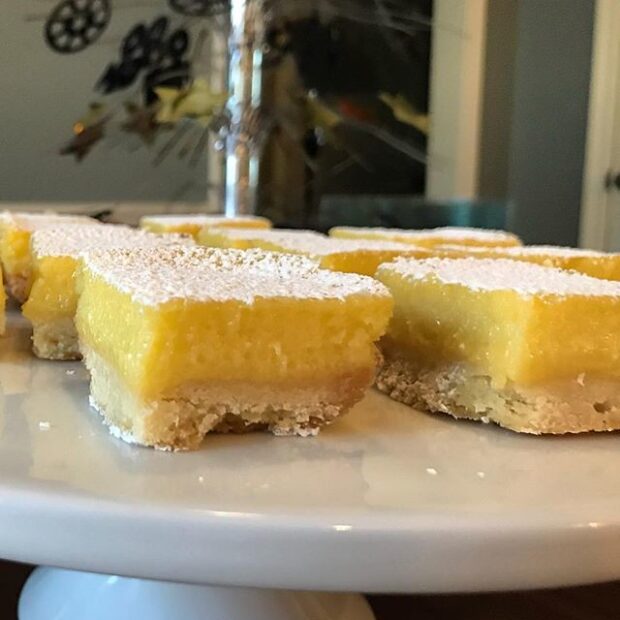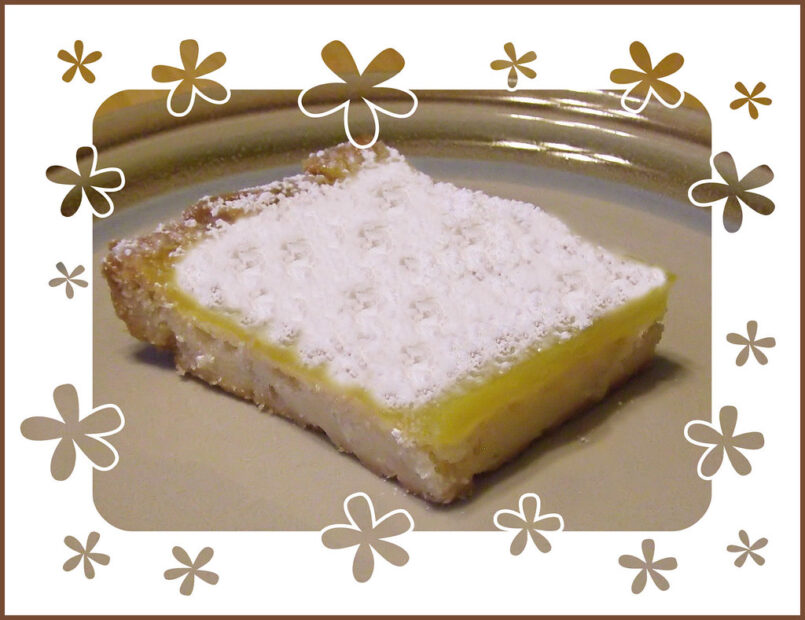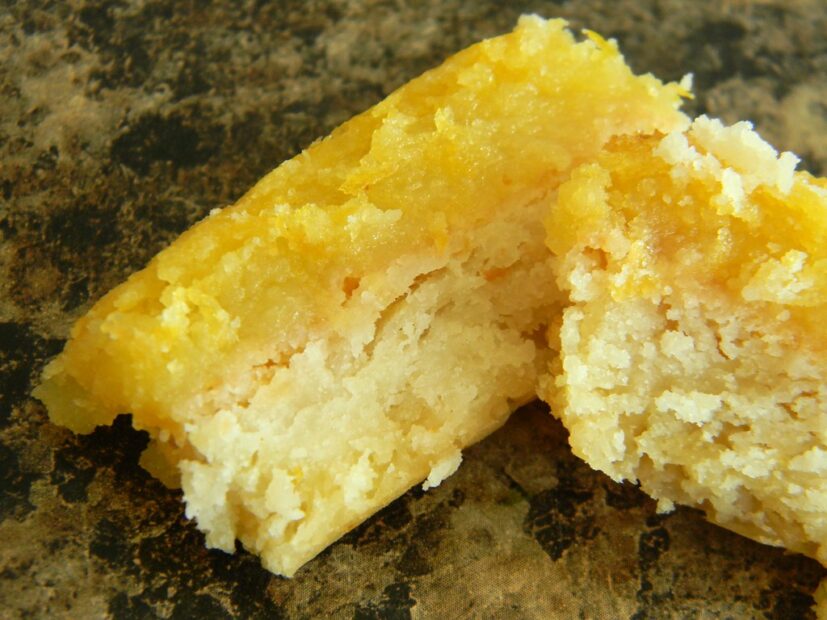Traveling through an airport can be a daunting experience, especially for those who are frequent flyers or have had their fair share of travel woes. From long lines at security to the stress of catching a flight on time, airports can often be a breeding ground for frustration and anxiety. However, with a few clever life hacks, you can make your airport experience a breeze. In this article, we will explore nine simple yet effective tips to help you navigate through the airport with ease, ensuring that you start your journey in the most relaxed and organized manner possible. Continue Reading
Why Visit Sequoia National Park
Sequoia National Park is a natural treasure, home to some of the most awe-inspiring landscapes in the United States. Towering giant sequoias, including the world-famous General Sherman Tree, dominate the scenery, evoking a sense of wonder and timelessness. The park offers a unique mix of attractions, from pristine meadows to rugged mountain peaks, making it a haven for outdoor enthusiasts, families, and nature lovers alike.
Whether you’re hiking through lush forests, marveling at the park’s massive trees, or stargazing under some of the darkest skies in California, every moment in Sequoia National Park is unforgettable.
Importance of Planning Your Visit
The park spans over 400,000 acres, with diverse ecosystems ranging from low-elevation foothills to the towering High Sierra peaks. Its vastness can be overwhelming, and careful planning is essential to ensure you don’t miss the highlights. Knowing the best times to visit, must-see spots, and practical travel tips will help you make the most of your adventure.
What This Guide Covers
This guide provides a comprehensive look at Sequoia National Park, including its rich history, iconic attractions, thrilling activities, and essential tips for visitors. Whether you’re planning a weekend getaway or an extended trip, you’ll find everything you need to know to explore this incredible destination.
Section 1: Overview of Sequoia National Park
Brief History
Sequoia National Park, established in 1890, was the second national park in the United States and the first created to protect a living organism: the giant sequoia. These ancient trees can live for over 3,000 years, and the park was established to preserve their unique ecosystem from logging and other threats.
Today, the park is part of the larger Sequoia and Kings Canyon National Parks complex, which together offer a breathtaking blend of natural beauty and biodiversity.
Key Features
- Giant Forest: The heart of the park and home to the largest sequoias, including the General Sherman Tree.
- High Sierra Wilderness: A rugged, mountainous region with stunning alpine lakes and dramatic vistas, perfect for experienced hikers and backpackers.
- Foothills Region: Known for its wildflower blooms in spring and diverse wildlife, including black bears and mule deer.
Best Time to Visit
- Spring and Summer (March to August): Ideal for hiking, exploring the giant sequoias, and accessing high-altitude areas. Spring also brings vibrant wildflowers to the foothills.
- Fall and Winter (September to February): Fall offers fewer crowds and stunning foliage, while winter transforms the park into a snowy wonderland, perfect for snowshoeing and cross-country skiing.
Section 2: Must-See Attractions in Sequoia National Park
General Sherman Tree
The General Sherman Tree is a natural marvel and the largest living tree on Earth by volume. Towering at 275 feet with a massive base diameter of 36 feet, this iconic sequoia is a testament to the grandeur of nature. The tree’s size can’t be fully captured in photographs; standing at its base, you’ll feel dwarfed by its sheer immensity.
- Tips for Visiting:
The General Sherman Tree is one of the park’s most visited attractions, so it’s wise to plan your visit strategically. The main parking lot is about half a mile from the tree, with a well-paved trail leading to its base. Arrive early in the morning or late in the afternoon to avoid peak crowds, particularly during summer. Winter visitors should check road conditions, as snow can impact accessibility. - Nearby Trails:
For a more immersive experience, explore the Congress Trail, a 2-mile loop starting near the General Sherman Tree. This peaceful trail winds through the Giant Forest and introduces you to other colossal sequoias, including the Senate and the House Group, clusters of trees named for their resemblance to a governing body.
Moro Rock
Moro Rock is a striking granite dome that provides one of the park’s most breathtaking viewpoints. The short but steep climb involves 350 steps carved into the rock, leading to a summit with panoramic views of the Sierra Nevada Mountains, the Kaweah River Canyon, and the Great Western Divide. On clear days, the vistas stretch for miles, offering a perspective that few other spots in the park can match.
- Safety Tips:
The ascent is not for the faint of heart. While the steps are stable, the climb can feel challenging due to its elevation and the narrow pathways near the summit. Wear sturdy hiking shoes for better grip, and take breaks if needed. Be extra cautious during wet or icy conditions, as the steps can become slippery. - Best Times to Visit:
Sunrise and sunset are magical times to visit Moro Rock, as the soft light enhances the surrounding landscapes and offers incredible photo opportunities.
Tunnel Log
The Tunnel Log is one of Sequoia National Park’s quirkiest landmarks. Created from a fallen sequoia in 1937, the tunnel was carved to allow cars to pass through its massive trunk. Measuring 17 feet wide and 8 feet high, it’s a playful reminder of the park’s rich history and human interaction with its natural wonders.
- Nearby Attractions:
After snapping a photo at the Tunnel Log, head over to Crescent Meadow, a tranquil area often called the “gem of the Sierra.” This meadow is surrounded by towering trees and offers serene walking trails that feel like stepping into a fairytale. Keep an eye out for wildlife like deer and marmots, which are common in this area.
Crystal Cave
For a completely different perspective of Sequoia National Park, venture underground to explore the wonders of Crystal Cave. This marble cavern is adorned with stunning stalactites, stalagmites, and shimmering rock formations, illuminated by guided tour lights. The cave’s cool, damp atmosphere contrasts sharply with the sunlit forests above, creating a unique and memorable experience.
- Booking Tips:
Crystal Cave tours are offered seasonally, typically from May to September. Tickets must be purchased in advance at the visitor centers or online, as they often sell out during peak seasons. Be prepared for a short but steep hike to the cave entrance. - What to Bring:
Wear sturdy shoes with good grip, as the cave floors can be slippery. Bring a jacket, as temperatures inside the cave remain cool year-round (around 50°F).
Section 3: Best Activities in Sequoia National Park
Hiking Trails
Sequoia National Park offers a diverse array of trails, from easy loops through lush meadows to challenging multi-day treks across alpine terrain. Hiking is one of the best ways to experience the park’s varied ecosystems, towering trees, and stunning vistas.
Easy Trails
- Big Trees Trail:
This 1.2-mile loop circles Round Meadow, providing a gentle walk that’s perfect for families or those looking for a leisurely pace. Along the way, interpretive signs explain the ecology and history of the giant sequoias, making it an educational experience. - Crescent Meadow Loop:
A 1.6-mile trail through the picturesque Crescent Meadow, often called the “gem of the Sierra.” The trail offers opportunities to spot deer, marmots, and birds while soaking in the serene beauty of the surrounding forest.
Moderate Trails
- Tokopah Falls Trail:
This 4-mile round trip follows the Marble Fork of the Kaweah River to a stunning 1,200-foot waterfall. The trail is dotted with wildflowers in spring and offers incredible views of granite cliffs along the way. - Congress Trail:
Starting near the General Sherman Tree, this 2-mile loop provides a quieter alternative to busier areas, taking you past notable sequoias like the President and the McKinley Tree.
Challenging Trails
- High Sierra Trail:
Spanning 72 miles from Crescent Meadow to Mount Whitney, this multi-day trek is a bucket-list adventure for experienced hikers. The trail offers dramatic alpine scenery, pristine lakes, and a chance to experience the park’s wilderness. - Mount Whitney Trail:
This challenging ascent to the highest peak in the contiguous United States (14,505 feet) is not for the faint-hearted. Permits are required, and preparation is essential for this strenuous but rewarding journey.
Wildlife Watching
Sequoia National Park is a haven for wildlife, offering sightings of black bears, mule deer, bobcats, and an array of bird species. Whether you’re hiking or relaxing at a campground, you’re likely to encounter some of the park’s diverse inhabitants.
- Tips for Safe Encounters:
- Maintain Distance: Keep at least 100 yards from bears and 25 yards from other wildlife.
- Food Storage: Use bear-proof containers provided at campsites to avoid attracting animals.
- No Feeding: Feeding wildlife is prohibited, as it disrupts their natural behaviors and can create dangerous situations.
Birdwatchers will enjoy spotting species like Steller’s jays, woodpeckers, and mountain bluebirds. Bring binoculars for a closer look at these feathered residents.
Stargazing
Sequoia National Park’s remote location and minimal light pollution make it a prime destination for stargazing. The night sky here is a breathtaking display of constellations, shooting stars, and the Milky Way.
- Best Spots:
- Big Trees Trail: The meadow’s open space is perfect for laying out a blanket and enjoying the stars.
- Wolverton Meadow: Another excellent stargazing spot, with easy access and plenty of space to set up for the evening.
- Best Times:
Summer and early fall are ideal for stargazing, with clear skies and warm nights.
Camping and Lodging
Staying overnight in the park is one of the best ways to immerse yourself in its natural beauty.
- Camping Options:
- Lodgepole Campground: Centrally located, this campground offers proximity to the Giant Forest and popular trails. Facilities include flush toilets and a nearby market.
- Dorst Creek Campground: A family-friendly site with spacious campsites and easy access to hiking trails.
- Lodging Options:
For those seeking more comfort, the Wuksachi Lodge offers rustic yet cozy accommodations within the park. With its convenient location and on-site dining, it’s an excellent choice for families and couples.
Section 4: Practical Tips for Visiting Sequoia National Park
Getting There
- Nearest Airports: Fresno Yosemite International Airport (FAT) is the closest major airport, about 1.5 hours away.
- Driving Directions: From Los Angeles, the park is about 4 hours north via CA-198.
Shuttle Options
During the busy season, free shuttles operate within the park, making it easy to access major attractions without worrying about parking.
Entrance Fees and Passes
- Entrance Fee: $35 per vehicle, valid for 7 days.
- Annual Pass: The America the Beautiful Pass ($80) covers all U.S. national parks for a year.
What to Pack
- Essentials for Hiking: Comfortable shoes, a reusable water bottle, sunscreen, and a first-aid kit.
- Cold-Weather Gear: Layers, gloves, and a hat for winter visits.
Safety Considerations
- Bear Safety: Always store food in bear-proof lockers provided at campsites.
- Weather Preparedness: Temperatures can vary greatly; check the forecast and dress accordingly.
- Trail Etiquette: Yield to uphill hikers and stay on marked paths to preserve the ecosystem.
Accessibility
The park offers wheelchair-accessible trails, such as the Big Trees Trail, and facilities like restrooms and visitor centers designed for all visitors.
FAQs
How much time do you need to explore Sequoia National Park?
A weekend is enough to see major attractions like the General Sherman Tree and Moro Rock. For a more in-depth experience, 3–4 days allow time for hiking and exploring nearby Kings Canyon.
Can you visit both Sequoia and Kings Canyon National Parks on one trip?
Yes, the parks are adjacent and connected by the scenic Generals Highway, making it easy to explore both.
What is the best time to see the giant sequoias?
The giant sequoias are accessible year-round, but spring and summer offer easier trail access and warmer weather.
Are pets allowed in Sequoia National Park?
Pets are allowed in parking areas and on paved roads but not on trails or in wilderness areas.
Conclusion
Sequoia National Park offers an unparalleled blend of natural wonders, from the awe-inspiring giant sequoias to the rugged beauty of the High Sierra. Its iconic attractions, thrilling activities, and serene atmosphere make it a must-visit destination.
Whether you’re marveling at the General Sherman Tree, hiking to Tokopah Falls, or stargazing in the Giant Forest, every moment spent here is an opportunity to connect with nature. Ready to experience the magic of Sequoia National Park? Start planning your trip today and prepare for an unforgettable adventure in one of America’s most treasured landscapes.
Phuket Old Town is a treasure trove of culture and history, offering a vibrant escape from the island’s famous beaches. Nestled in the heart of Phuket, this area is a living museum showcasing a unique blend of Sino-Portuguese architecture, bustling markets, and cultural richness. Whether you’re an architecture enthusiast, a foodie, or a history buff, Phuket Old Town promises an immersive experience that blends the past with the present.
In this guide, we’ll uncover everything from its iconic architecture and must-visit attractions to its mouthwatering cuisine and insider tips for making the most of your visit.
1. The History and Charm of Phuket Old Town
Sino-Portuguese Influence
Phuket Old Town owes much of its character to its historical role as a thriving trade hub during the 19th-century tin-mining boom. Merchants from China and Europe converged here, leaving behind a legacy reflected in its architecture. The Sino-Portuguese shophouses, with their pastel-colored facades, arched windows, and intricate motifs, are a photographer’s dream.
Beyond the shophouses, colonial-style mansions like the iconic Baan Chinpracha stand as symbols of wealth from the tin-mining era. These grand homes often feature ornate tiles, high ceilings, and wooden shutters, offering a glimpse into the opulence of a bygone era.
Cultural Fusion
Phuket Old Town is a melting pot of Thai, Chinese, and Malay influences, which is evident in its temples, cuisine, and festivals. The Jui Tui Shrine, for example, reflects Chinese spiritual traditions, while the harmonious coexistence of Buddhist temples and Islamic mosques highlights the area’s cultural diversity.
The community here cherishes its traditions, from celebratory processions during the Vegetarian Festival to the preservation of ancestral recipes passed down through generations.
2. Top Attractions in Phuket Old Town
Thalang Road
Thalang Road is the heartbeat of Phuket Old Town, radiating charm and vibrancy. This historic street is lined with beautifully preserved Sino-Portuguese shophouses that house boutique stores, quaint cafes, and local art galleries. As you wander down Thalang Road, you’ll notice its unique character: a blend of cultural heritage and modern-day creativity.
On weekdays, visitors can explore boutique shops offering locally crafted goods, from batik clothing to handmade jewelry, or sip on iced coffee at one of the many charming cafes. Art galleries display works by local artists, making it a haven for art lovers.
However, the true magic of Thalang Road comes alive every Sunday evening during the Sunday Walking Street Market. The road transforms into a lively bazaar, teeming with food vendors, street performers, and artisans showcasing their crafts. It’s a sensory delight—aromatic street food, vibrant decorations, and the buzz of live music make it an unmissable experience.
Soi Romanee
Soi Romanee is a picturesque alley that holds layers of history. Once a notorious red-light district during Phuket’s tin-mining era, it has evolved into one of the most charming and photogenic streets in the Old Town.
The lane is lined with candy-colored shophouses, many of which have been transformed into boutique accommodations, trendy cafes, and specialty stores. The facades’ pastel hues and vintage-style architecture make Soi Romanee a favorite spot for photography enthusiasts.
As you stroll through, you’ll find spots offering locally brewed coffee, quaint souvenir shops, and even a few historical markers explaining the lane’s intriguing past. In the evening, the street takes on a romantic glow with decorative lighting, making it a perfect spot for a leisurely walk or a quiet drink.
Phuket Thai Hua Museum
The Phuket Thai Hua Museum is a must-visit for history buffs looking to dive into the island’s Chinese immigrant heritage. Housed in a beautifully restored Sino-Portuguese building, this museum was once a Chinese-language school. Today, it tells the story of Phuket’s Chinese settlers through a series of well-curated exhibits.
Inside, you’ll find photographs, artifacts, and interactive displays that trace the journey of Chinese immigrants who arrived during the tin-mining boom. The exhibits highlight their contributions to Phuket’s cultural and economic development, as well as their integration into Thai society.
The museum’s architecture is as captivating as its content, with its ornate tilework, grand staircase, and airy courtyards offering a glimpse into Phuket’s colonial-era opulence.
Shrines and Temples
Phuket Old Town is rich in spiritual landmarks, offering a window into the religious and cultural practices of its diverse community.
- Jui Tui Shrine: A vibrant Chinese temple dedicated to Tean Hu Huan Soy, the god of performing arts. It’s a hub of activity during festivals, with worshippers lighting incense and offering food to deities. The shrine’s colorful decor and intricate carvings make it a visually striking site.
- Put Jaw Temple: Known as the oldest Chinese temple in Phuket, this serene sanctuary is dedicated to the goddess of mercy, Guan Yin. Its peaceful atmosphere and beautifully crafted statues provide a contrast to the bustling streets outside.
Both sites are excellent for learning about the spiritual side of Phuket’s Chinese community. Visitors are encouraged to explore respectfully, observing the rituals and traditions practiced here.
Phuket Trickeye Museum
For a break from history and tradition, the Phuket Trickeye Museum offers a playful, modern experience. This interactive 3D art museum features an array of optical illusions, with painted backdrops designed to let visitors become part of the art.
Pose as if you’re escaping a shark attack, balancing on a tightrope, or stepping into a surreal dreamscape. The museum is perfect for families, couples, or solo travelers who want to inject some fun into their day. It’s also a fantastic way to engage kids in creative, hands-on art appreciation.
3. Food and Dining in Phuket Old Town
Local Street Food
Phuket Old Town is a food lover’s paradise, offering a mix of Thai and Chinese flavors that reflect the area’s cultural heritage.
- Hokkien Noodles: Thick yellow noodles stir-fried with seafood and served in a rich, savory broth. Often topped with crispy garlic, this dish is a local favorite.
- Roti: Thin, flaky flatbreads cooked on a griddle and paired with either savory curries or sweet toppings like condensed milk and sugar.
- Dim Sum: Steamed dumplings and buns, a nod to Chinese culinary influence, served fresh at roadside stalls.
Street vendors are found on almost every corner, ensuring you’ll never run out of delicious options to sample. The food is affordable, authentic, and bursting with flavor, making it a must-try for visitors.
Heritage Cafes
Phuket Old Town’s heritage cafes offer more than just coffee—they provide a journey back in time. The Old Phuket Coffee Station is one such spot, where vintage decor and nostalgic vibes transport you to a bygone era.
These cafes serve local snacks like kanom jeen (rice noodles with curry) alongside traditional Thai coffee brewed with condensed milk. They’re perfect for a mid-day break, offering a blend of culture and comfort.
Fine Dining
For those seeking a more refined experience, Phuket Old Town boasts upscale restaurants that elevate traditional Phuket cuisine with modern techniques.
Blue Elephant, housed in a grand colonial mansion, serves royal Thai dishes made from fresh, locally sourced ingredients. Signature dishes include Massaman curry and crispy golden prawns, presented with meticulous attention to detail. Dining here feels like a celebration of Phuket’s culinary heritage in an elegant setting.
4. The Best Times to Visit and Events in Old Town
Best Time of Day
- Early Morning: Start your day with quiet streets and soft lighting that’s perfect for photography. The morning atmosphere is peaceful, allowing you to soak in the beauty of Old Town without the crowds.
- Evenings: Visit in the evening for a vibrant scene as the streets light up with colorful lamps. Markets and cafes buzz with activity, creating an energetic ambiance.
Annual Events
Phuket Old Town hosts several events that reflect its cultural richness and community spirit:
- Phuket Old Town Festival: This annual celebration features parades, music, dance, and food stalls. The streets come alive with decorations, and the festival provides an excellent opportunity to experience local arts and traditions.
- Vegetarian Festival: Held annually in October, this event showcases the spiritual practices of Phuket’s Chinese community. The festival is known for its striking rituals, including fire walking and body piercings, symbolizing purification and devotion.
5. Shopping and Souvenirs in Phuket Old Town
Sunday Walking Street Market
This bustling weekly market is a one-stop destination for handmade crafts, quirky souvenirs, and delicious street food. From wooden carvings to batik prints, it’s a paradise for shoppers.
Boutiques and Shops
Phuket Old Town is dotted with specialty stores offering:
- Thai silk: High-quality fabrics perfect for gifts.
- Jewelry: Locally designed pieces that reflect Phuket’s artistic flair.
- Antiques: Rare finds for collectors seeking unique treasures.
6. Insider Tips for Exploring Phuket Old Town
- How to Get There: Use local buses, tuk-tuks, or taxis. Renting a scooter is also a budget-friendly option.
- What to Wear: Light, breathable clothing is ideal for the tropical climate, but pack a shawl for temple visits to ensure modesty.
- Budget-Friendly Tips: Stick to street food and free-entry attractions for an affordable experience without compromising quality.
Frequently Asked Questions (FAQs)
- What makes Phuket Old Town unique?
Its blend of historical architecture, vibrant markets, and cultural diversity sets it apart. - Is Phuket Old Town worth visiting?
Absolutely! It offers a rich cultural experience distinct from Phuket’s beach-centric attractions. - How long should I spend in Phuket Old Town?
One day is sufficient to explore the highlights, enjoy the cuisine, and shop for souvenirs. - Are there guided tours available?
Yes, several companies offer walking tours, often led by knowledgeable guides who share fascinating historical anecdotes. - Is Phuket Old Town family-friendly?
Yes, with attractions like the Trickeye Museum and lively markets, it’s a great destination for all ages.
Conclusion: Step Into the Heart of Phuket
Phuket Old Town is a captivating blend of history, culture, and local life. From its colorful shophouses and rich culinary scene to its vibrant festivals and markets, it offers something for every traveler.
So, step away from Phuket’s beaches and immerse yourself in the charm of its Old Town. You’ll leave with not only souvenirs but also a deeper appreciation of this island’s heritage. Don’t forget to add Phuket Old Town to your itinerary for an unforgettable cultural experience in Thailand!
Few places in the U.S. can claim the unique experience of driving on a sandy shoreline, but Daytona Beach, Florida, offers just that. Renowned for its hard-packed sand and rich motorsport history, Daytona Beach has been attracting beach drivers for decades. This tradition combines the thrill of driving with the calming allure of the Atlantic, making it an unforgettable experience.
Whether you’re a first-time visitor or a seasoned Daytona Beach enthusiast, this guide will walk you through everything you need to know—from rules and regulations to tips for a seamless drive. So, is Daytona Beach worth visiting? Absolutely—and here’s why.
Why Daytona Beach Is Famous for Beach Driving
Historical Context
Daytona Beach is synonymous with motorsports. In the early 1900s, its hard-packed sand served as a natural racetrack, hosting legendary speed trials and car races. This unique terrain birthed the modern NASCAR, with Daytona International Speedway just a stone’s throw away. Today, the tradition of beach driving continues as a nod to this storied past, allowing visitors to experience a piece of history firsthand.
A Unique Experience
Driving on Daytona Beach isn’t just about convenience; it’s a sensory adventure. The combination of ocean breezes, the sound of waves, and the freedom to explore miles of sandy coastline in your vehicle creates an experience you won’t find at most other beach destinations.
Rules and Regulations for Driving on the Beach: What You Need to Know
Driving on Daytona Beach is a thrilling experience, but it comes with rules designed to preserve the environment and keep everyone safe. Here’s a detailed guide to the essentials:
Access Points
Daytona Beach has several designated ramps for vehicles to access the sandy shoreline. These ramps make entering and exiting the beach safe and straightforward. Some of the most popular access points include:
- International Speedway Boulevard: A central and convenient ramp for many visitors.
- Silver Beach Avenue: A great option for beachgoers heading to the southern parts of Daytona Beach.
- Dunlawton Avenue: Offers easy access to nearby attractions and beach amenities.
Keep an eye out for clearly marked signs indicating where you can drive onto the beach. Remember, not all areas are open to vehicles, so stick to designated zones to avoid fines or being turned away.
Permits and Costs
Driving on Daytona Beach requires a vehicle access fee, which helps maintain the beach and supports conservation efforts. Here’s what to expect:
- Daily Fee: $20 per vehicle, payable at the entrance toll booths.
- Season Passes: For frequent visitors, seasonal permits offer significant savings.
- Volusia County Residents: $25 for the season.
- Non-Residents: $100 for the season.
Toll booths are located at the beach ramps, where you can pay and receive your permit for the day or season. It’s a simple process that helps keep the experience accessible for all.
Safety Guidelines
Driving on the beach is a privilege, and following these guidelines ensures a safe experience for you, pedestrians, and the local wildlife:
- Speed Limit: Stick to a strict 10 mph. This slow pace ensures safety for beachgoers, including children and pets.
- Driving Zones: Stay within the marked lanes, which are clearly indicated by cones or signs. This keeps vehicles away from no-driving zones and ensures smooth traffic flow.
- Parking: Always park parallel to the shoreline. Make sure you’re not blocking other vehicles, pedestrian paths, or emergency access lanes.
Seasonal Restrictions
The rules for beach driving change throughout the year, often based on weather and ecological considerations:
- Driving Hours: Generally, you can drive from sunrise to sunset. However, local conditions such as high tides or storms may restrict access.
- Sea Turtle Nesting Season (May 1–October 31): To protect endangered sea turtles, driving zones may be limited during this period. Always respect marked nesting areas to support conservation efforts.
Tips for Driving on Daytona Beach
Driving on sand requires preparation and attention to detail. Follow these tips to ensure a smooth and enjoyable experience:
Prepare Your Vehicle
- 4WD Advantage: Four-wheel-drive (4WD) vehicles handle sand more effectively, but standard vehicles can also manage if driven carefully.
- Tire Pressure: Slightly lower your tire pressure (around 15–20 psi) to improve traction on sand. Don’t forget to reinflate your tires afterward.
- Emergency Tools: Pack a small shovel or traction mats to help if your vehicle gets stuck, along with essential items like a flashlight and a jack.
Timing Your Visit
Planning your visit around the tides and crowds can make a huge difference:
- Low Tide: Driving during low tide provides firmer sand for better traction. High tide can limit access to certain areas and increase the risk of getting stuck.
- Avoid Peak Hours: Weekends and holidays can be busier, so arriving early gives you a prime parking spot and a more relaxed experience.
Essentials to Bring
Stay comfortable and prepared for a day on the beach by packing these must-haves:
- Sun Protection: Bring sunscreen, hats, and sunglasses to shield yourself from the Florida sun.
- Food and Drinks: A cooler stocked with water and snacks will keep you hydrated and energized.
- Emergency Gear: Beyond vehicle tools, pack items like jumper cables, a first-aid kit, and extra towels.
Parking Etiquette
- Designated Areas Only: Always park in the approved parking zones to avoid fines or inconveniencing others.
- Leave Room for Others: Ensure there’s enough space for cars to pass and pedestrians to navigate safely.
- Mind the Lanes: Avoid setting up large umbrellas, tents, or chairs too close to the driving lanes.
What to See and Do Along Daytona Beach
Daytona Beach offers more than just a unique driving experience. While cruising along the sandy shoreline, take advantage of these highlights:
Scenic Views
The ocean views along Daytona Beach are stunning, with miles of golden sand and azure waters stretching as far as the eye can see. Feel the sea breeze and keep an eye out for local wildlife, like pelicans soaring overhead or dolphins playing in the waves.
Activities Nearby
- Swimming and Sunbathing: Park your vehicle, spread out a beach towel, and dive into the refreshing Atlantic waters.
- Daytona Beach Boardwalk: Just a short drive away, this iconic area offers arcades, restaurants, and live entertainment.
- Iconic Landmarks:
- Daytona International Speedway: Immerse yourself in the world of motorsports with a tour of this legendary racetrack.
- Ponce de Leon Inlet Lighthouse: Climb to the top of Florida’s tallest lighthouse for unparalleled coastal views.
Photography Opportunities
Daytona Beach provides a picture-perfect backdrop. Capture your car parked against the crashing waves or the fiery hues of a beach sunset. Pro tip: Sunrise and sunset are ideal for soft, natural lighting in your photos.
Is Daytona Beach Worth Visiting?
Daytona Beach is more than just a destination—it’s an experience. Its unique mix of natural beauty, historical significance, and family-friendly activities make it a must-visit spot. Here’s why:
- Motorsport Legacy: Relive the glory of Daytona Beach’s racing history as you drive on the same sands that hosted legendary speed trials.
- Accessibility: The rare privilege of driving on the beach adds an element of adventure that few other coastal destinations offer.
- Affordability: A daily pass is wallet-friendly, and the range of free or low-cost activities ensures there’s something for every budget.
Whether you’re seeking relaxation, exploration, or a mix of both, Daytona Beach delivers in spades.
Frequently Asked Questions (FAQs)
Can I drive on all parts of Daytona Beach?
No, vehicles are restricted to designated driving zones. Signs and cones mark these areas clearly.
Do I need a special vehicle to drive on Daytona Beach?
While 4WD vehicles perform better on the sand, most cars can navigate the beach if driven carefully. Avoid bringing sports cars or vehicles with low ground clearance.
What is the best time to visit Daytona Beach for driving?
The best time is during low tide when the sand is firmer, typically early morning or late afternoon.
Are there environmental concerns with beach driving?
Yes, but Volusia County has measures in place to protect the beach and wildlife, such as limiting access during turtle nesting season and maintaining specific driving zones.
Is Daytona Beach kid-friendly?
Absolutely! Beyond driving, the beach offers shallow waters for swimming, soft sand for building castles, and plenty of nearby attractions.
Conclusion
Driving on Daytona Beach is more than just a practical way to explore the coastline—it’s a celebration of history, culture, and the joy of seaside adventure. Whether you’re navigating the sands for the first time or returning for another memorable visit, the experience is uniquely Daytona.
Pack your car, grab your sunscreen, and hit the beach! Have you driven on Daytona Beach before? Share your experiences or tips in the comments below—we’d love to hear from you.













